History of Astrology
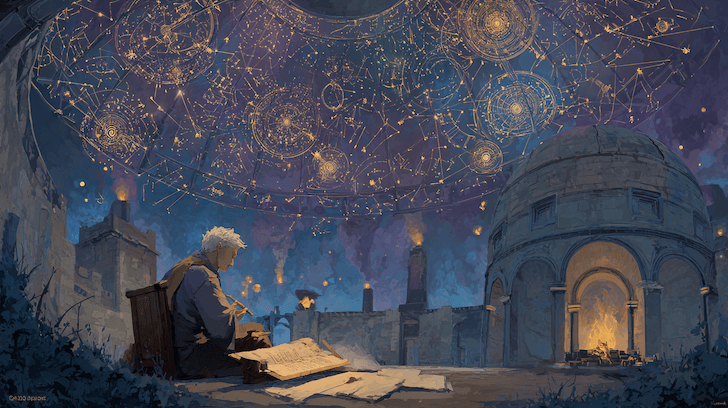
Astrology isn’t a single invention—it’s a conversation across thousands of years. What we now call “astrology” is really a family of related sciences, philosophies, and rituals that evolved across different civilizations.
Astrology began as the study of signs in the sky—a language of meaning linking celestial and earthly events. Over time, this evolved from political omen-reading to personal charts, and eventually into the symbolic and psychological systems used today. Below is an overview of astrology’s historical arc and how each era added its own layer of depth and method.
Major Eras of Astrology
| Era | Approx. Dates | Key Contributions |
|---|---|---|
| Mesopotamian Omen Traditions | c. 2000–700 BCE | Celestial omens, eclipses, and planetary signs read for state affairs; origins of predictive sky-watching. |
| Egyptian & Early Calendrics | c. 1800–500 BCE | Decans and star clocks for ritual timing; influence on sacred calendars and temple life. |
| Hellenistic Synthesis | 2nd c. BCE – 6th c. CE | Birth of horoscopic astrology—signs, houses, aspects, and predictive systems; philosophical framing of fate and character. |
| Indian (Jyotiṣa) Development | 2nd c. CE onward | Sidereal zodiac, lunar mansions, daśā timing, divisional charts; continuous scholarly tradition. |
| Chinese Astro-Calendrics | 1st millennium BCE onward | Integration of omenology and calendar cycles (sexagenary system, Four Pillars, Zi Wei Dou Shu). |
| Islamic Golden Age | 8th–13th c. | Preservation, translation, and expansion of Greek texts; refined house systems, horary, and electional methods. |
| Medieval & Renaissance Europe | 12th–17th c. | Lilly, Bonatti, Cardano; astrology reintroduced via Arabic sources; coexistence with early astronomy. |
| Modern & Psychological Era | 19th–21st c. | Humanistic, transpersonal, and revivalist schools; rediscovery of ancient methods through translation and software. |
Before Zodiacs: Omen Traditions (~2000–700 BCE)
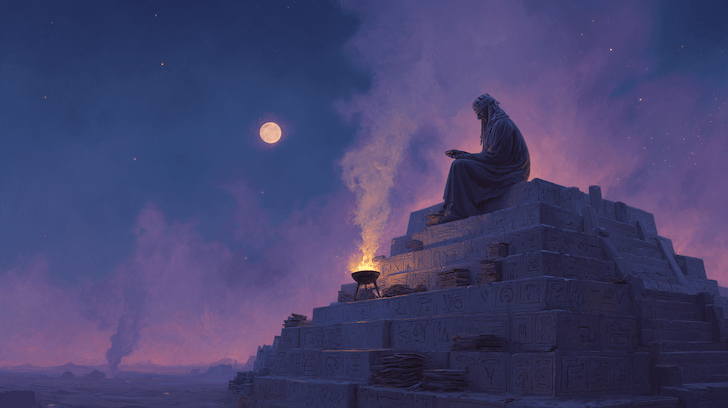
In Mesopotamia, astrology began as political sky-reading. Priests recorded eclipses, comets, and planetary risings as divine omens for the welfare of kings and cities. Texts like the Enūma Anu Enlil formed early libraries of celestial interpretation. Egypt developed decanal calendars, aligning ritual life with stars that rose each ten days. China’s imperial astronomers tracked the heavens for state events and crop timing. In India, the Vedāṅga Jyotiṣa set the earliest foundations for ritual calendars tied to the Moon and Sun.
Early astrology wasn’t personal—it was collective and ceremonial, focused on kingdoms, crops, and ritual order.
The Hellenistic Synthesis (~2nd c. BCE – 6th c. CE)

In Alexandria, Greek, Egyptian, and Babylonian thought converged. This fusion created horoscopic astrology, the practice of casting natal charts based on birth time and location. The system introduced 12 signs, 12 houses, aspects, and dignities, alongside mathematical tools for time-lord periods and predictive timing.
Key sources include Dorotheus of Sidon, Vettius Valens, and Ptolemy, whose Tetrabiblos set the tone for astrology as a rational, cosmic science. Concepts like sect (day vs. night), lots (e.g., Fortune and Spirit), and whole-sign houses remain cornerstones of interpretation today.
Indian (Jyotiṣa) Lineage
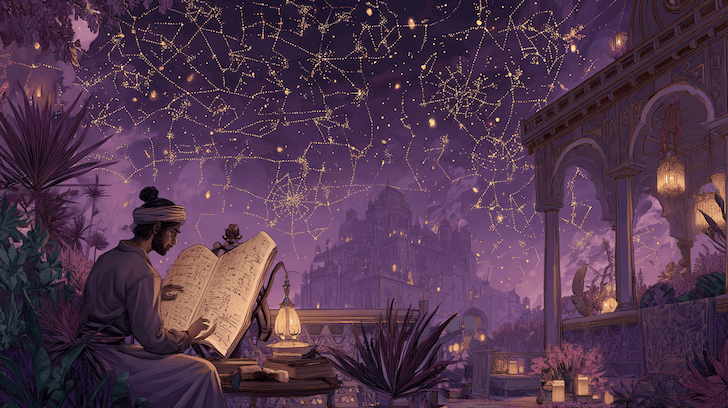
In India, astrology developed along a sidereal rather than tropical zodiac. Texts like the Yavanajātaka and Bṛhat Parāśara Horā Śāstra wove Greek influence into the indigenous timing and ritual structure. Jyotiṣa emphasizes nakṣatras (lunar mansions), daśā cycles that time life events, and varga divisional charts for detailed analysis. Unlike Western astrology, it maintained continuous priestly and scholarly transmission, adapting but never breaking from its core philosophical roots.
Chinese Astro-Calendrics
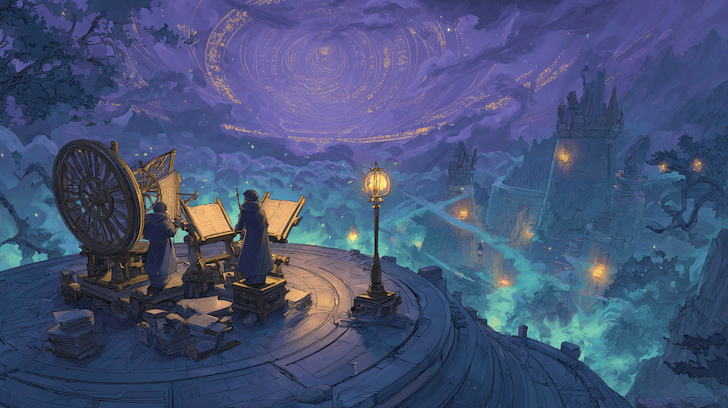
Chinese astrology developed from an independent cosmology linking Heaven, Earth, and Humanity. Its systems use lunar–solar calendars, the sexagenary cycle (Heavenly Stems and Earthly Branches), and dynastic omen traditions. Later forms like Ba Zi (Four Pillars) and Zi Wei Dou Shu focus on destiny mapping and life cycles, integrating numerology and moral philosophy. The approach remains less geometric and more time-centered, viewing celestial motion as part of the world’s moral and seasonal balance.
Islamic Golden Age (~8th–13th c.)
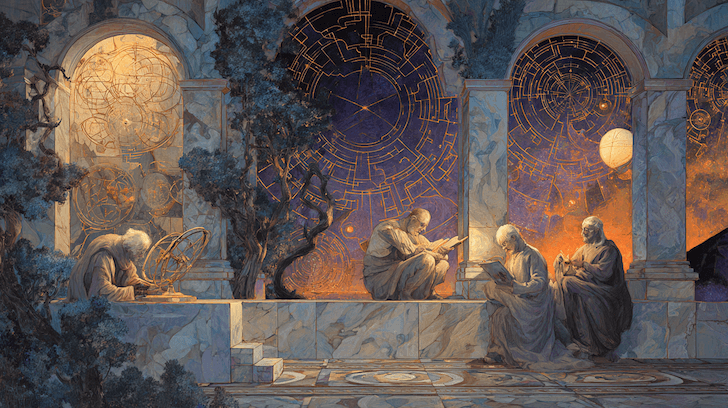
When Greek knowledge entered the Islamic world, astrologers such as Māshā’allāh, Sahl ibn Bishr, and Abū Ma‘shar refined it into a precise science. They developed mathematical house divisions, improved astronomical accuracy, and formalized horary and electional techniques. Through translation centers like Baghdad and Toledo, their works re-entered Europe and shaped medieval astrology.
Renaissance & Early Modern Astrology (~12th–17th c.)

Latin translations brought astrology back into European intellectual life. Figures like Guido Bonatti, Girolamo Cardano, and William Lilly wrote handbooks still used today. Meanwhile, astronomers like Kepler experimented with new aspects and harmonics, seeking natural laws behind astrological principles. Even as astrology lost its university standing, it flourished in courts, medical schools, and almanacs.
Modernity & Revival (~19th–21st c.)

The 19th and 20th centuries saw astrology reinvented for the modern psyche. Alan Leo reframed it in spiritual and moral terms; Dane Rudhyar and Liz Greene merged it with depth psychology. The rise of computer software and digital archives revived ancient methods—whole-sign houses, time-lords, sect—once preserved only in manuscripts. Today, astrology spans many schools: Hellenistic revivalists, humanistic psychologists, traditionalists, and data-oriented researchers all coexist in dialogue.
Modern astrology is a synthesis of eras—mathematical Babylonian roots, Greek geometry, Indian timing, Chinese cycles, and modern psychological insight.
Quick Reference Timeline
| Period | Region | Highlights |
|---|---|---|
| 2000–700 BCE | Mesopotamia, Egypt, China, India | Omenology, decanal clocks, ritual calendars, early lunar/solar observation |
| 2nd c. BCE–6th c. CE | Hellenistic Mediterranean | Zodiac signs, houses, aspects, time-lords, philosophical astrology |
| 2nd c. CE–Present | India | Sidereal zodiac, nakṣatras, daśās, vargas |
| 1st millennium BCE–Present | China | Sexagenary calendar, Heavenly Stems, Ba Zi, imperial omenology |
| 8th–13th c. | Perso–Arabic World | Translations, horary/electional methods, mathematical refinement |
| 12th–17th c. | Europe | Lilly, Bonatti, Kepler; synthesis of Arabic and classical ideas |
| 19th–21st c. | Global | Psychological astrology, traditional revival, computerization, plural schools |
Context: Zodiacs and Houses
- Tropical vs. Sidereal: The tropical zodiac is tied to the equinoxes (seasons); the sidereal to fixed stars. Both divide the ecliptic into twelve equal signs but start from different reference points. Western astrology generally uses the tropical system; Indian astrology uses the sidereal.
- House Systems: Houses evolved from whole-sign to mathematical quadrant systems like Porphyry, Regiomontanus, and Placidus. Different traditions interpret houses philosophically, not mechanically—emphasizing meaning over measurement.
Ethics and Lineage
- Acknowledge where your methods come from—every chart technique carries centuries of development.
- Respect cultural and linguistic contexts—Greek, Sanskrit, and Chinese texts are distinct ecosystems of meaning.
- Avoid fatalism. Astrology's purpose has always been to orient, not imprison—the chart describes patterns, not verdicts.
Further Study
- Hellenistic: Tetrabiblos (Ptolemy), Anthology (Valens), Carmen Astrologicum (Dorotheus)
- Medieval/Latin: Christian Astrology (Lilly), Book of Astronomy (Bonatti)
- Jyotiṣa: Bṛhat Parāśara Horā Śāstra, Bṛhat Saṃhitā (Varāhamihira)
- Chinese: Book of Changes (I Ching), Zi Wei Dou Shu manuals, studies by Needham
- Modern: Dane Rudhyar, Liz Greene, Demetra George, Chris Brennan (Hellenistic Astrology)
Astrology’s story is one of adaptation, continuity, and rediscovery. Every generation reinterprets the sky’s symbols in the light of its own language and tools. What endures is the same impulse: to read meaning in the movements above—and to find our place within the pattern.
Get Your Birth Chart
Calculate your complete astrological chart with precise astronomical data based on your birth time and location
Generate Chart